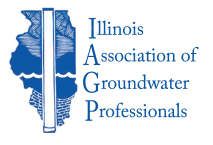 | Welcome to IAGP! |
- Home
- For Wellowners
- Water Treatment
Water Treatment
Whether groundwater or surface water, you may want to enhance the quality of your water.
Treatment systems
Sometimes the groundwater, while plentiful, is not of the greatest quality. There are a number of treatment systems available to solve almost any problem. An important thing to consider when treatment is needed is the knowledge of the treatment installer. Make sure that person has a good understanding of water well systems. Treatment dealers are not required to be licensed so check references, ask about their professional affiliations, etc. (see checklist for hiring a contractor under Water Wells)
Groundwater may contain natural occurring minerals that are not desirable as well as impurities that are a result of human activity or pollution. Groundwater movement may pick up magnesium, calcium and chlorides found in the soil. Arsenic, boron, selenium or radon may also be naturally occurring.
Even though your water may appear to be fine, there are many possible contaminants that you can’t taste, see, or smell. Public water supplies are required by law to be tested on a regular basis. As a responsible private well owner, you should do the same. IAGP recommends having a water test at on a regular basis; generally once a year is fine.
Common minerals, organisms and chemicals that can affect quality and safety:
- Coliforms are bacteria and in themselves are not harmful. They are used as an indicator for other harmful bacteria generally found with them. In Illinois water tests standards are for “0 Coliform.” ALWAYS ask for a count of coliform present on the results of a water sample. If your water sample comes back positive, a count is an important diagnostic tool. A count of 4 or 5 is a much different situation that a count of “too numerous to count.”
- E.coli is one strain of bacteria associated with human and animal fecal matter. Any detectable presence of E.coli in your well water means your water is unsafe for drinking without treatment such as boiling.
- Nitrates are not bacteria, but an end result of a chemical reaction. Its presence can be the result of commercial fertilizers and human or animal wastes. Infants less than six months old can become sick from drinking formula or eating cereals made with water high in nitrate. Nitrate reduces the amount of oxygen in the blood, resulting in blue baby syndrome. It can even be fatal for young children, the elderly or anyone with an impaired immune system.
- Iron and/or sulfur bacteria. Iron is one of the most abundant minerals in the earth’s crust and is very common in groundwater. Too much iron makes the water look reddish-brown, can stain laundry and makes drinks taste terrible. Also common are iron and sulfur bacteria which combine with minerals in the water (typically iron, manganese or hydrogen) to produce slime deposits or corrosive gas. Iron and sulfur bacteria are not harmful but can clog pipes and fixtures, produce odors, and provide a habitat for other bacteria such as coliform bacteria.
Water testing
It is recommended that you test your well water regularly (at minimum every two years) for bacteria including total coliforms and E.coli. Keep and record water well testing results.
Test regularly even if your water seems fine, because you can’t always taste, smell or see bacteria or other contaminants. Don’t rely on your neighbor’s test results – water wells that are only a few steps apart usually have different water quality.Besides routine testing, you should also test when any of the following occur after disinfection has occurred:
- Changes in water quality, including taste, odor, and appearance
- Regular users experience unexplained health problems that may be water-related
- After any plumbing work
- After flooding